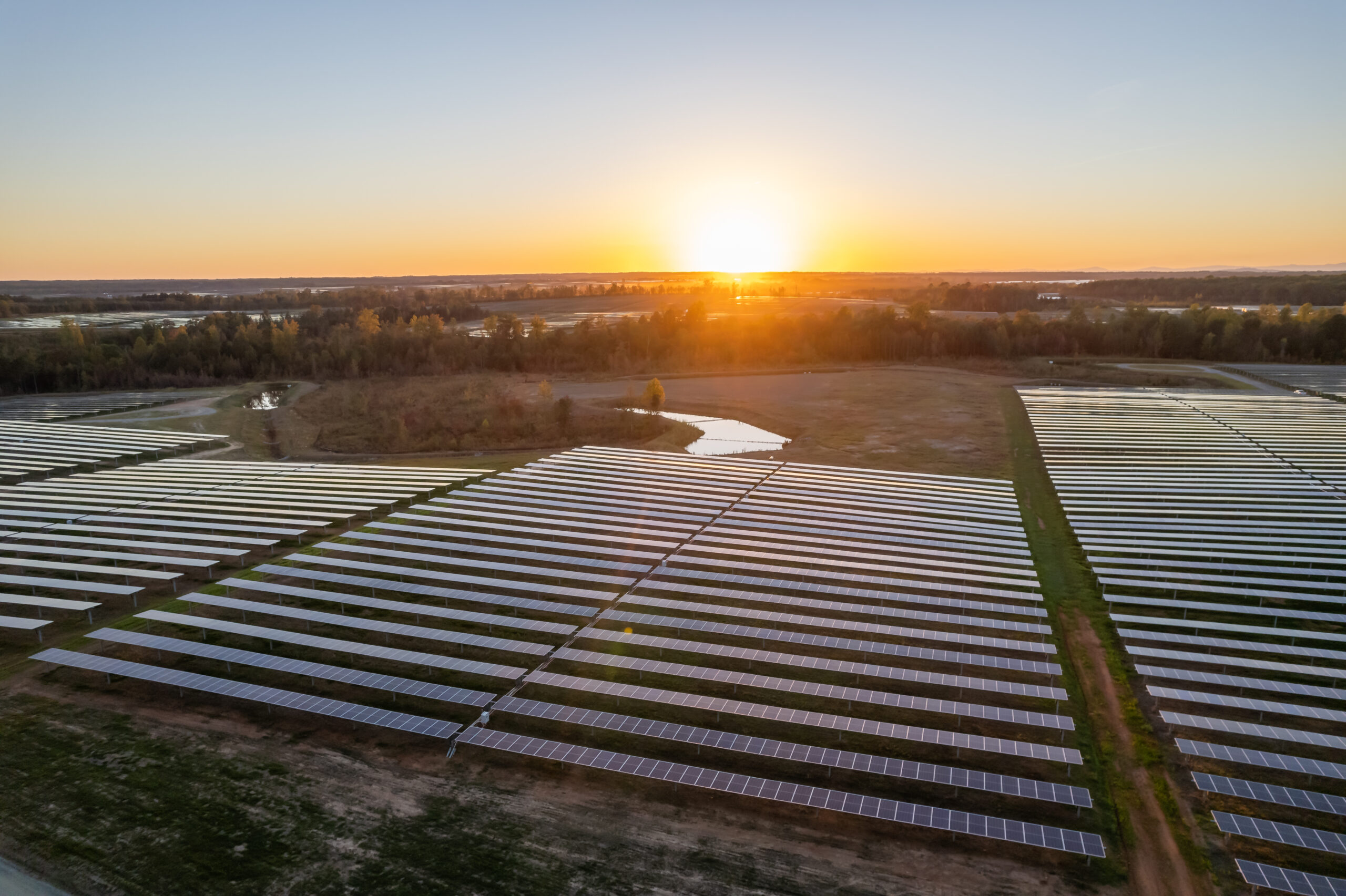AI teeters between climate boon and energy burden
Latest News
Artificial intelligence can help tackle the thorniest climate problems. But there’s a catch: It uses a ton of energy.
While AI tools have been around for some time, this climate conundrum is coming to a head now because the sophistication of these tools, like the well-known ChatGPT, and their corresponding energy use has exploded in recent years as tech companies like Microsoft, Google and Amazon ramp up a cutthroat race to dominate the sector.
“November 2022 is a landmark month for the whole energy industry,” Arshad Mansoor, CEO of the Electric Power Research Institute, said on Monday night at the annual energy gathering CERAWeek by S&P Global in Houston. “Chat GPT was released. It became democratized.”
It will take evermore electricity-hungry data centers to feed exponential AI growth. In the United States, the electric grid — facing a shortage of power lines — is already bursting at its seams.
At the same time, AI is becoming a linchpin tool to help industries like aviation, agriculture and energy suppliers find climate solutions.
AI is among the buzziest topics on the agenda at CERAWeek this year.
The future potential power demand of AI is getting especially acute consideration because demand for electricity more broadly is on the rise in the U.S. after remaining relatively flat for decades, driven by new U.S. laws onshoring manufacturing of everything from electric vehicles to electronic chips.
“We are competing with a renaissance in manufacturing,” Kleber Costa, chief commercial officer for the global renewable developer, AES Corporation, said on Monday night at the conference.

Energy leaders are seen here speaking about the potential power demand for AI at CERAWeek in Houston in a session on March 18 titled, “What Will Be the Power Demand for AI?” The answers to that question all varied but the consensus was nobody really knows at this point other than it will be a lot. Photo credit: Cat Clifford.
The extent to which AI contributes to the energy woes of the future really depends on just how much it becomes a part of everyday life.
“The rate at which that technology penetration happens is the big unknown,” says Benjamin Lee, professor of electrical engineering and computer science at the University of Pennsylvania. “It feels like the late 90s when the search engine first came out, and then now, 10, 15, 20 years later, everyone’s using it for everything. ”
As for climate applications of AI, they’re seemingly endless.
Google is developing AI to help airlines avoid global warming-inducing contrails and to help city engineers reduce stop-and-go traffic and resulting emissions, Juliet Rothenberg, the lead of Google’s Climate AI efforts, tells Cipher. (Breakthrough Energy, which also supports Cipher, contributed to the contrails work.)
The tech giant is also developing AI to improve flood forecasting and wildfire boundary tracking and to mitigate extreme heat risks. AI has the potential to help mitigate between 5 and 10% of global greenhouse gas emissions, according to a November 2023 report from Boston Consulting Group commissioned by Google.
AI also aids farmers and foresters in balancing environmental, climate and economic impacts on vast land areas, says Shashi Shekhar, professor at the University of Minnesota where he leads the new AI Institute for Climate-Land Interactions, Mitigation, Adaptation, Tradeoffs and Economy.
Ricardo Manuel Falú, AES’ chief operating officer, in a separate interview before CERAWeek, said the firm uses AI to help manage its energy supplies.
“The single most challenging bottleneck that we have today is transmission. There is simply not enough transmission infrastructure,” Falú says. AES customers include large tech companies at the helm of developing AI products — Microsoft, Google and Amazon — that are demanding massive quantities of clean energy from an already transmission constrained grid, oftentimes on a 24/7 basis.
“Look at AI and generative AI as a way to best operate the system. And if you best operate the system, you reduce cost, you reduce emissions, without putting the reliability of the grid at risk,” Falú tells Cipher.
AI is also being used in developing cutting edge energy innovations, like in maintaining the stability of the plasma in fusion reactors.

Renewable project developer AES has massive solar farms, like the one seen here in Spotsylvania County, Virginia, to help meet the virtually insatiable clean power demands of tech giants like Microsoft – which are being turbocharged by AI. Photo credit: AES.
And yet, the very nature of AI — taking vast data sets and crunching them to identify patterns and make projections — makes it “fundamentally incompatible with environmental sustainability,” Alex de Vries, a Dutch data scientist who launched Digiconomist to track the carbon intensity of bitcoin and who has since published work on the energy demands of AI.
“If you’re making AI models, a bigger model will always be more robust, and a more robust model will always perform better. At the same time, it’s also true that bigger models will simply require more computational power and energy sources to operate,” de Vries tells Cipher.
Most of AI’s energy use happens in data centers — large facilities of computer servers that run everything from AI to cryptocurrencies to cloud storage. Estimating future energy use of data centers is “complex to navigate,” says the International Energy Agency, because technologies like AI are so new and future adoption is still unknown.
The best estimates we have suggest AI’s energy thirst will continue to grow. Globally, data centers used 460 terawatt hours, or 2% of electricity worldwide, in 2022, according to the International Energy Agency. By 2026, the agency estimates that figure could more than double. AI alone could use roughly the same amount of energy as the Netherlands by 2027, de Vries found in an analysis published last year.
One way to minimize AI’s climate impacts is to improve its energy efficiency — though that brings new challenges.
The energy efficiency of AI “all boils down to this one number, which is the number of bits per watt of power consumed,” says Deep Jariwala, professor of electrical and systems engineering at the University of Pennsylvania. Efforts are underway to make more efficient silicon computer chips, identify new, better materials to make these chips and to identify ways to run AI software on less energy. “Innovations have to happen on every level,” says Jariwala.

Servers inside a Crusoe Energy data center. The company operates data centers that power energy-greedy sectors like bitcoin mining and AI with excess and ultra-cheap renewables or on natural gas that would otherwise be flared into the atmosphere, as shown here. Photo credit: Crusoe Energy.
Looking for energy efficiencies to solve AI’s climate problem risks a rebound effect, however, because any efficiency improvements tend to increase usage.
“I optimize the fuel needed to fly a plane; it doesn’t mean that I will consume less fuel. I will use planes more,” says Roberto Verdecchia, a computer science professor at the University of Florence.
Verdecchia advocates for increased transparency about how much energy an AI task takes.
Not all AI models use the same amount of electricity. Running a text-based AI program uses exponentially less energy than an AI program that generates images or videos.
For companies like Amazon that have aggressive climate and AI goals, part of the solution is buying up record quantities of renewable energy.
“We recognize that you can’t do AI using energy that generates carbon,” Bill Vass, Amazon Web Services’ vice president of engineering, tells Cipher.
AES often advises its big tech clients to put their data centers near clean energy sources, Falú says.
“One of our big realizations is that moving power is actually harder than moving data,” says Chase Lochmiller, CEO of Crusoe Energy, which seeks to utilize excess and cheap clean energy to power data centers.
Ergo, it’s more realistic to address the climate impacts of AI by responsibly sourcing energy than it is to try to significantly curtail AI use, Lochmiller says: “Are we going to put the genie back in the bottle? Probably not.”
Editor’s note: Breakthrough Energy, which supports Cipher, was involved in Google’s contrails research.